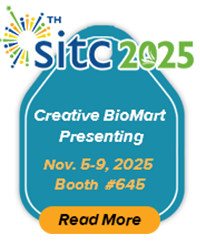Immunofluorescence
Immunofluorescence principle
Immunofluorescence utilizes the specificity of antibodies with fluorescent dyes to recognize their antigen, and therefore allows visualization of the distribution of the target molecule through fluorescent dyes with a fluorescence microscope. Immunofluorescence is widely used as an example of immunostaining and is a specific example of immunohistochemistry that makes use of fluorophores to visualize the location of the special biomolecules. There are two classes of immunofluorescence techniques including direct and indirect.
Here are protocols for indirect immunofluorescence in tissues and monolayer cells.
Immunofluorescence protocol
Materials
- 10 PBS (pH 8.0).
- Formaldehyde: 16%, methanol free, use fresh, store opened vials at 4°C in dark, dilute in PBS for use.
- Blocking Buffer: (1? PBS with 5% normal goat serum and 0.3% Triton X-100): add 2.5 ml 10X PBS, 1.25 ml normal serum from the same species as the secondary antibody (e.g., normal goat serum, normal donkey serum) and 21.25 ml ddH2O and mix well. While stirring, add 75 µl Triton X-100.
- Antibody Dilution Buffer (1? PBS with 1% BSA and 0.3% Triton X-100): add 4 ml 10? PBS and 120 µl Triton X-100 to 0.4 g BSA. Bring to final volume of 40 ml with ddH2O and mix well.
- Primary antibody and secondary antibody.
- Prolong Anti-Fade Reagent.
- Tissue or cell samples
Immunofluorescence protocol for Tissues
For immunofluorescence labeling of organ tissue, a paraformaldehyde fixation and paraffin embedding protocol is used. The organs are obtains by dissection.
- The dissected organs are then allowed to fully adhere to the surface of the slides by gently removing all of the PBS as well as the incubation chamber.
- Immediately before the organs are dehydrated, slides are rapidly immersed in cold (-20°C) acetone for 5 min.
- PBS containing 1% Triton X-100 is added to the slides, and a PAP pen ring is applied around the tissue to minimise the volume of reagents.
- Slides are incubated overnight at 4°C in a humidified chamber made from a Petri dish and PBS-wet paper.
- The next morning, slides are washed three times in PBS and used for immunolocalization.
- Slides are incubated for 30 min in a blocking buffer (PBS, 0.1% Triton X-100, 10% normal goat serum), then incubated for 2.5 h with primary antibodies which against the target protein. The primary antibodies are applied to the slides diluted follow the manufacturer’s recommendation.
- Slides are then washed three times in PBS and incubated with secondary antibodies. Depending on the type of primary antibody used, the secondary antibody is labeled with different fluorescence groups. Secondary antibodies are applied following the manufacturer’s recommendation, too.
- Slides are washed three times in PBS, rinsed in water and mounted with ProLong® gold anti-fade mounting medium containing 4’,6-diamidino-2-phenylindole (DAPI) to counterstain the cell nuclei.
- The slides are then visualized under a fluorescence microscope.
Immunofluorescence protocol for Monolayer cells
- Monolayer cells are cultured and prepared on a coverslips before the immunofluorescence procedure.
- The cells are washed with PBS twice and fixed with 3% paraformaldehyde at room temperature for 12 min.
- Then paraformaldehyde is quenched by washing coverslips twice with 100 mM in PBS. After an additional wash with PBS, coverslips are blocked with 2% serum in PBS for 1 h.
- Wash the coverslips with PBS twice.
- Incubate the coverslips with primary antibody following the manufacturer’s recommendation at room temperature.
- Then wash with PBS four times and incubate with the secondary antibodies conjugated with appropriate fluorescence group. The secondary antibodies are used following the manufacturer’s recommendation.
- Wash the coverslips with PBS three times.
- The coverslips are mounted onto slides using ProLong Antifade. Fluorescence is observed with a fluorescence microscope.

